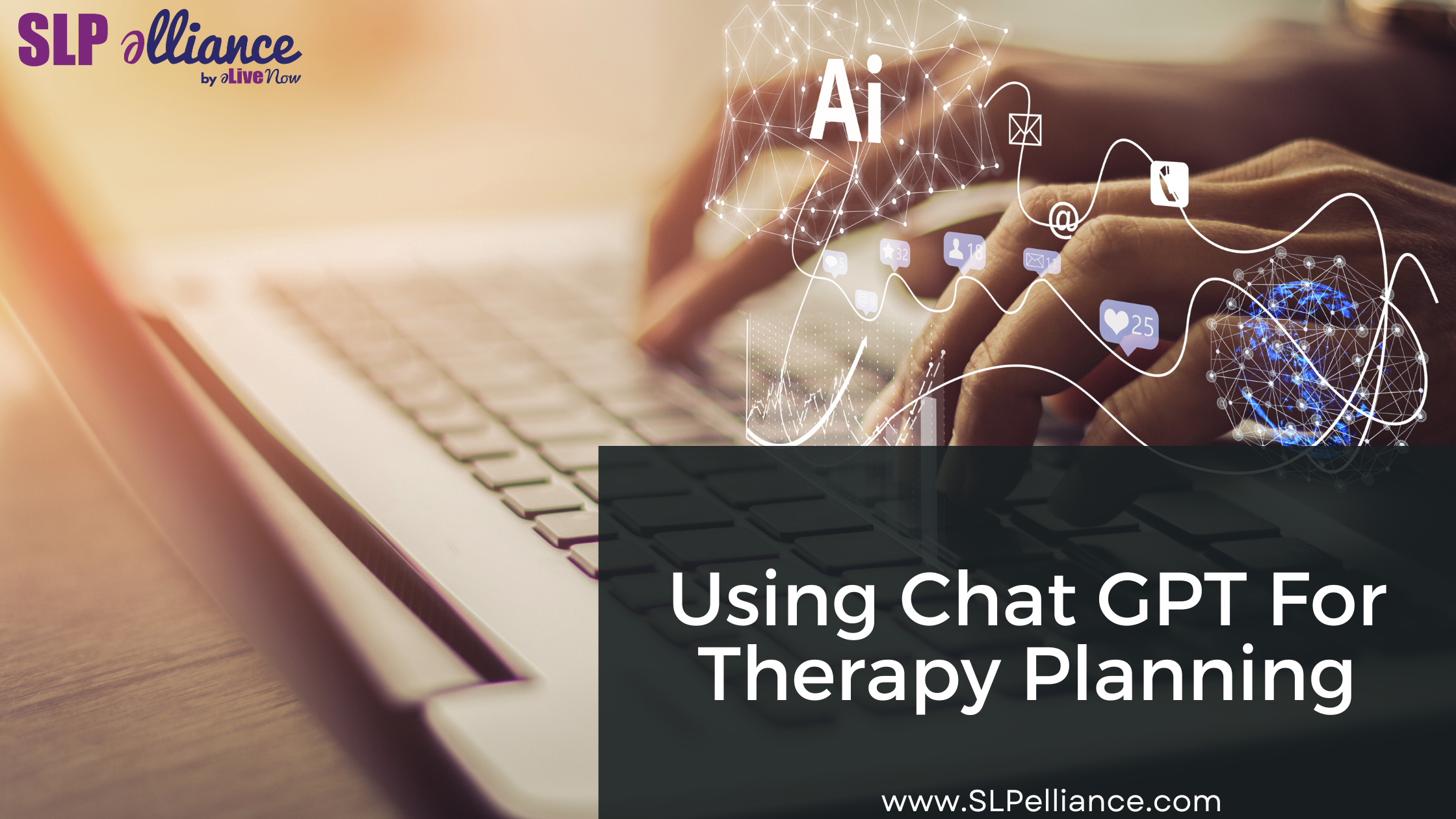If I’m going to be honest, I initially ignored most things I heard about Chat GPT. For those that aren’t familiar with it, Chat GPT was developed by Open AI (artificial intelligence) to take requests (verbal or written) to create natural language for you to use (without having to do it yourself). You may have heard about it in the news regarding professors complaining that they can tell when students use it to write a paper (that was my introduction to it).
My first impression was that it wouldn’t be personal and using it would feel like a cop-out. That was until I saw someone suggest (in a Facebook group for therapy materials) that we use it when therapy planning. I thought, “Oh, that sounds great,” but I didn’t look further into it. Then, I went to a state speech and hearing association conference where someone presented on a topic related to using AI. The presenter shared the Chat GPT platform on their screen and had therapists give suggestions for requests to make. Here are the things we noted:
Pros
- It will save you time searching for new word lists regarding specific speech sounds and age-appropriate vocabulary.
- If you are tired of your current materials or completely out of ideas, this is a fun way to get a break and create something new.
- You can use it to create study guides and generate more critical thinking questions (e.g., “Create 9th-grade level WH questions based on this reading passage”).
- It could create activities for mixed groups (e.g., list irregular verbs and plural nouns containing vocalic /r/).
- You can use the free version and don’t have to upgrade to a paid version to make sufficient therapy materials.
Cons
- It is not good for fact-checking (you have to be careful about where the information is coming from)
- The responses don’t always feel authentic (you’ll need to proofread and make edits as needed)
- It doesn’t always get it right when asking for speech-specific terms (e.g., “create a word list of minimal pairs for initial /k/ single syllable words”). You will have to correct the errors before using the suggestions.
- The free version is similar to the paid version; however, the paid version generates much better visuals
- AI systems are prone to bias from the sources it is using, so be mindful if considering using it in real-time with a student or client.
There are some things to consider based on my personal experiences using Chat GPT to create my own therapy materials. Don’t make requests assuming it understands speech jargon. It doesn’t. You need to be very specific in your requests. As shown above, you will want to say the grade level (for example) and amount of target words you need. I asked it to create short stories and will say I was not that impressed. I was hoping for something more functional but it tends to go into strange detail that isn’t necessarily accurate. For example, I asked it to generate a short story for a 1st grade reading level about the cartoon Bluey that contains irregular plural nouns. The irregular plural nouns were in there, but the story was bizarre. I had to do some heavy edits to make it usable. That being said, it still saved me time and money purchasing new resources (which means I will continue to play with it and use it for planning).
There are Chat GPT Prompts cheat sheets to help you learn how to make requests to get more precise responses. You can also read more about it from the September 2023 ASHA Leader: https://leader.pubs.asha.org/do/10.1044/leader.FTR2a.28092023.AI-slp-aud-ChatGPT.56/full/
Another helpful resource that goes into even more detail is from the Eat Speak and Think blog https://eatspeakthink.com/use-chat-gpt-for-speech-therapy/
Do yourself a favor and at least try it out! I find it to be a fun challenge to perfect my requests to get what I actually need from it. https://chat.openai.com/

